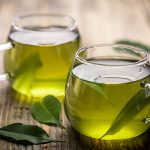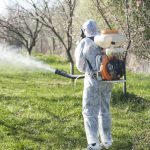
Pesticide linked to reproductive issues found in popular oat-based breakfast cereals
Wednesday, March 06, 2024 by Cassie B.
http://www.naturalnewsresearch.com/2024-03-06-pesticide-reproductive-issues-american-breakfast-cereals.html

A pesticide that has been linked to reproductive issues has been found in a number of popular American breakfast cereals, including Quaker Oats and Cheerios.
The pesticide in question is called chlormequat, and it has been shown in animal studies to reduce testosterone and fertility, cause disruptions to reproduction and damage developing fetuses. Although its usage is restricted to ornamental plants in the U.S., it is being increasingly found in oat-based foods sold throughout the nation. Many of the oat products that Americans consume originate in Canada, and the chemical’s use is permitted in oats and other foods that are imported from abroad and sold here.
A peer-reviewed study by the Environmental Working Group that was published in the Journal of Exposure Science and Environmental Epidemiology tested for the presence of the substance in people’s urine. They found chlormequat in 80% of the urine samples that were collected from American citizens between 2017 and 2023. The researchers noted that there was “a significant increase in concentration for samples from 2023,” indicating that its use is on the rise.
Moreover, the EWG found the chemical in 92% of the oat-based foods they purchased and tested in 2023. They report that there were detectable levels of the chemical in 90% of the non-organic oat-based foods they tested; just two samples of the wheat-based foods they tested had low levels, both of which were bread. In contrast, just one of the eight organic samples they tested contained detectable levels of chlormequat.
Although the use of chlormequat in oats was banned completely in the past, the EPA first granted approval for small amounts of the chemical on imported oats in 2018. In 2020, the allowable level was increased, which may explain why it is being increasingly found in Americans’ bodies.
Although ingesting large amounts of the chemical can be deadly for humans, researchers do not yet fully understand what the impact of low, regular doses – like those that may be consumed via a daily bowl of oatmeal, for example – could be on human health.
The study’s lead author, EWG Senior Toxicologist Dr. Alexis Temkin, said: “A precautionary approach should be used until more studies can investigate the potential health effects of chlormequat exposure in humans.”
She added that exposure to multiple chemicals can raise the health risks, even when the doses of the individual chemicals do not meet the levels considered to be harmful by regulatory agencies. In other words, although one food may contain an amount of a potentially toxic chemical that does not meet the threshold to be considered dangerous on its own, a person could easily consume multiple foods in one day that push their cumulative exposure into dangerous territory.
Americans are exposed to multiple agricultural chemicals through their diets
Sadly, chlormequat is not the only dangerous agricultural chemical that Americans are exposed to. Last year, a paper published by Georgetown University found a link between five decades of pesticide exposure and reduced sperm health.
Meanwhile, a study by The Indiana University School of Medicine found a significant rise in the herbicide dicamba in pregnant women, with 70% of those in the state testing positive for the presence of the chemical between 2020 and 2022. This represents a concerning rise from the 28% recorded in a similar study that was carried out a decade earlier. The chemical has been linked to several types of cancer.
Americans are also being regularly exposed to the herbicide glyphosate, which has been linked to oxidative stress, DNA damage, metabolic disorders, liver inflammation and some types of cancer. It is often used on oats to facilitate harvesting.
Sources for this article include:
Tagged Under: Tags: agriculture, badfood, badhealth, badpollution, cereal, chemicals, chlormequat, clean food watch, Ecology, environment, food supply, grocery, harvest, herbicides, men's health, oats, organic, pesticide, products, reproductive health, stop eating poison, toxic chemicals, toxic ingredients, toxins, women's health
RECENT ARTICLES


Study finds direct correlation between increased screen time for toddlers and delays in language development
By Laura Harris

STUDY: Researchers found microplastics in all human placenta they tested
By Laura Harris

Pesticide linked to reproductive issues found in popular oat-based breakfast cereals
By Cassie B.

HOSPITAL HOMICIDE: New study points to evidence that some COVID-19 patients were euthanized by hospitals
By Cassie B.
COPYRIGHT © 2017 NATURAL NEWS RESEARCH


